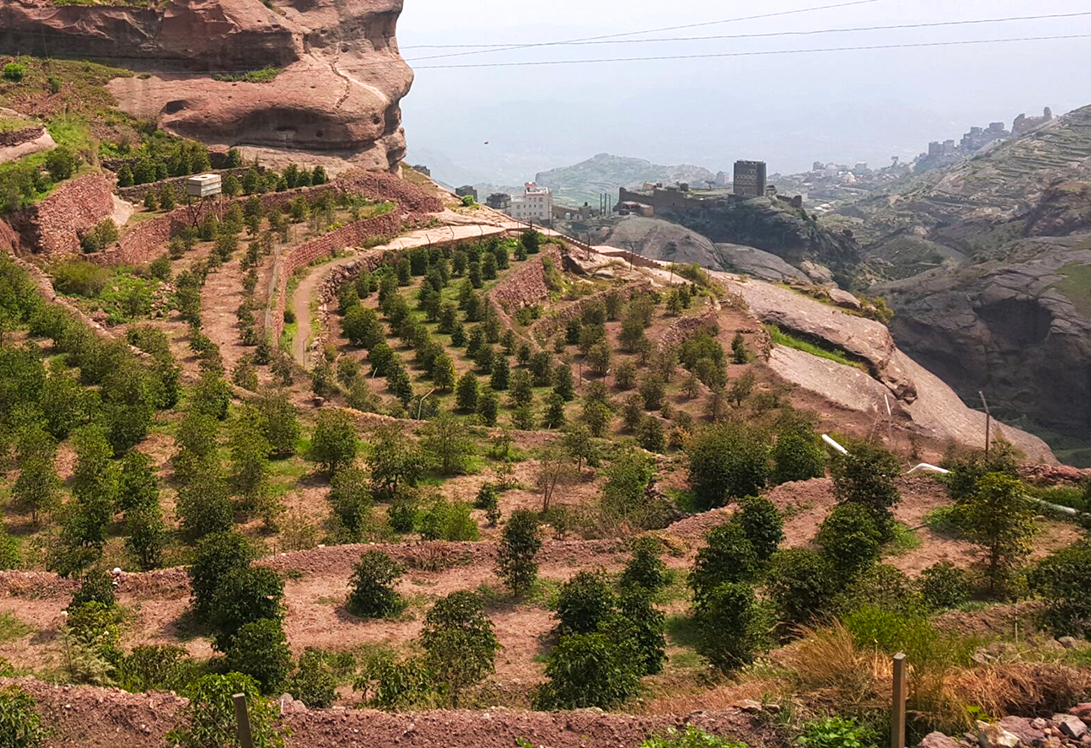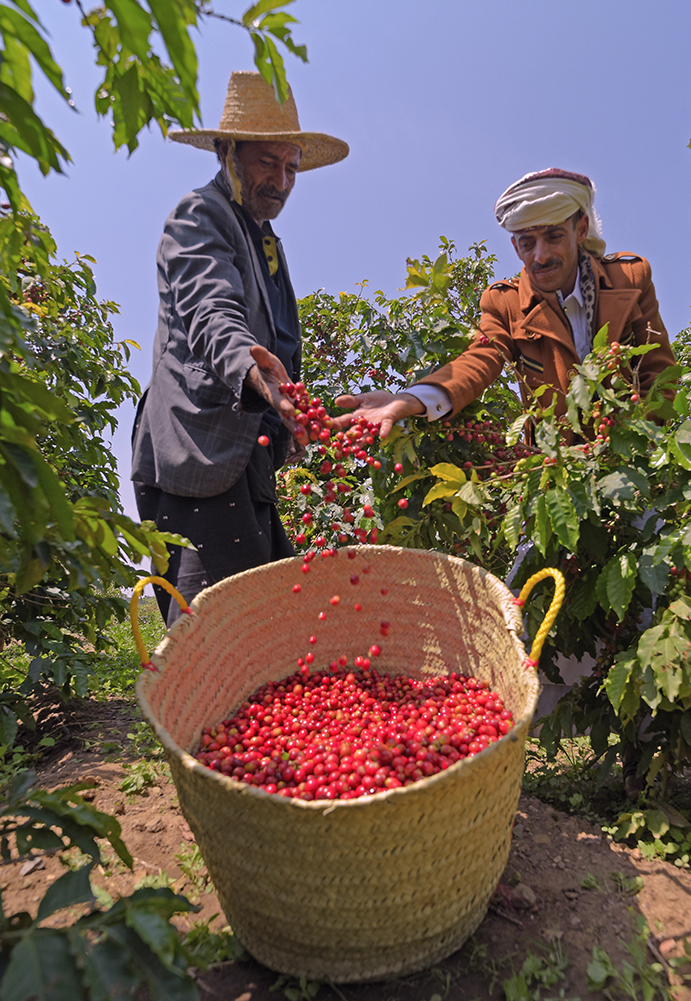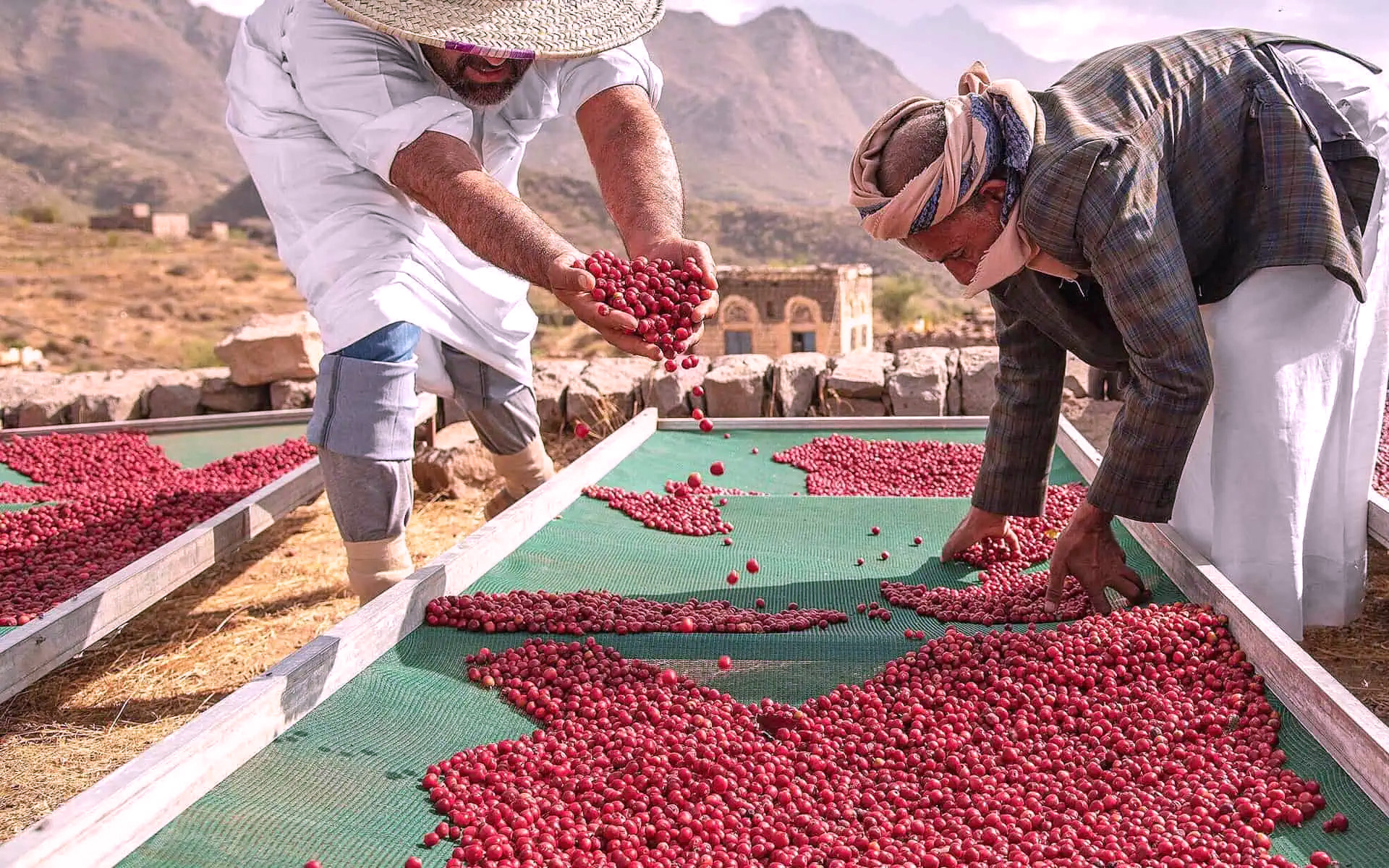












Yemen
250g
Cup Notes: Dark Cherry, Chocolate, Grape, Prune
A coffee that embodies the full flavour of its terroir. Rich and refined, this Yemeni lot offers a clean, balanced cup with remarkable depth, shaped by a Yemeni temperature-modulated anaerobic natural fermentation (DQ Process). Expect notes of dark fruit and chocolate, with a hint of gentle spice adding complexity to its lingering sweetness.
Suggested for espresso and filter
when we roast
We freshly roast to order all coffees on Monday, Wednesday and Friday (excluding national holidays), and ship the same day! Cut-off time is 11:59pm (UTC+1) of the day before the roast day. *We only ship whole beans*
Hozan is a village located in the Haraz Mountains, about a three-hour drive from Sana’a, the capital of Yemen.
In Hozan, Murad Saeed and his family have been growing coffee for decades. For them, cultivating coffee is more than just a livelihood — it’s a lifestyle and a deep-rooted passion. They work closely with Aqial, a coffee processing centre based in Sana’a. Aqial receives carefully handpicked, fully ripe cherries from Hozan and processes them using the DQ method, with well-controlled conditions and properly equipped drying beds.
During the harvest season, Murad is joined by his entire family in the fields. If you visit during this time, you’ll hear traditional harvest songs echoing through the village — a true celebration of the season. One of these heritage songs, often sung while harvesting, is called Coffee and Love. A verse from it says:
Oh, guardian of the coffee, rejoice — the coffee season has begun!
Why do the birds seem drunk among the green gardens?
Have they tasted the first cup of coffee before us?
And they go on, filling the valley with joyful melodies.
For Murad and his family, this is not just a coffee farm — it’s the scent of history, heritage, and heartfelt devotion.

BOURBON
Bourbon is one of the most culturally and genetically significant Coffea arabica varieties in the world, celebrated for its exceptional cup quality when grown at high altitudes. Alongside Typica, it is one of the two foundational cultivars from which many modern varieties have been developed. Historical records suggest that Bourbon was originally taken from the coffee forests of southwestern Ethiopia to Yemen, where it began to be cultivated. Recent genetic studies have confirmed this origin.
The variety was first cultivated on the island of Réunion, formerly known as Bourbon Island before 1789. From there, the French introduced it to mainland Africa and Latin America. Bourbon thrives best at elevations between 1,100 and 2,000 masl and typically yields 20–30% more than Typica. While commercially viable in terms of productivity and growth characteristics, Bourbon is generally susceptible to diseases and pests.
TYPICA
Typica is the most well-known and historically widespread of the Arabica varieties. It is a tall-growing plant, noted for its low yield, high susceptibility to major coffee diseases, and excellent cup quality.
Like all Arabica varieties, Typica is believed to have originated in southwestern Ethiopia and was brought to Yemen between the 15th and 16th centuries. By 1700, Typica seeds were being cultivated in India. In 1696 and 1699, seeds from India’s Malabar Coast were sent to Batavia (present-day Java, Indonesia). These few seeds gave rise to what is now recognized as the Typica variety.
In 1706, a single Typica plant was transported from Java to Amsterdam and placed in the city’s botanical gardens. In 1714, a specimen from that plant was gifted to France. From there, Typica began an extraordinary journey: in 1719, it was sent by the Dutch to Dutch Guiana (now Suriname), then in 1722 to Cayenne (French Guiana), and finally to northern Brazil in 1727. It reached southern Brazil between 1760 and 1770.
Meanwhile, from Paris, Typica plants were shipped to Martinique in the West Indies in 1723. The English later introduced it from Martinique to Jamaica in 1730. It arrived in Santo Domingo in 1735, from where it was sent to Cuba in 1748. Costa Rica received seeds from Cuba in 1779, followed by El Salvador in 1840.
By the late 18th century, Typica cultivation had spread widely across the Caribbean (including Cuba, Puerto Rico, and Santo Domingo), Mexico, Colombia, and much of Central America. It was reportedly grown in El Salvador as early as 1740. By the 1940s, Typica dominated coffee plantations throughout South and Central America. However, due to its low productivity and high vulnerability to disease, it has been largely replaced by more resilient varieties—though it is still widely grown in Peru, the Dominican Republic, and Jamaica, where it is famously known as Jamaica Blue Mountain.

The DQ process was initiated in 2018 by Ali Aldiwani
It combines natural drying with a modified anaerobic fermentation. The fermentation containers are left unsealed, depending entirely on the external temperature, which allows us to carefully control the fermentation of the red cherries. Once the desired fermentation level is reached, the cherries are exposed to direct sunlight for several days to immediately halt the fermentation. They are then moved to shaded drying beds for further drying.
This method is designed to minimise the impact of acetic acid, which tends to develop more prominently during anaerobic fermentation. The result is a coffee with intense fruity aromas and exceptional sweetness, but with reduced acetic acidity.
We apply this processing method regularly in Costa Rica, Yemen, and Ethiopia, as well as in other origins.
